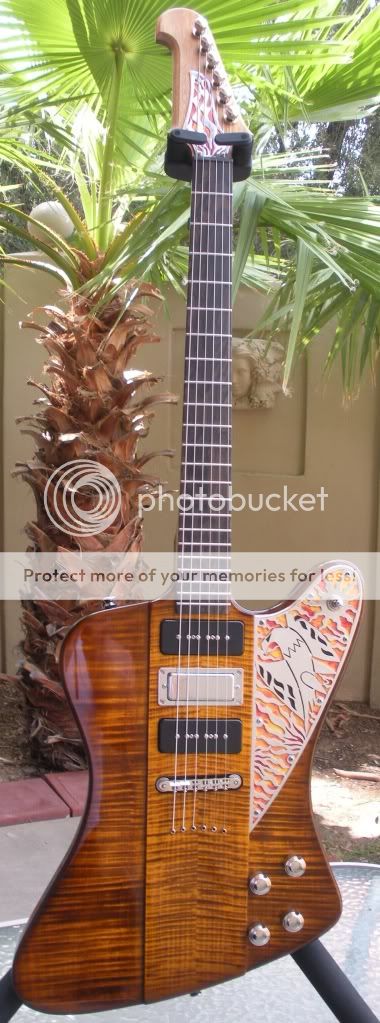I started a thread a while ago looking for some help with finding the right neck. The original thread is here:
http://unofficialwarmoth.com/index.php?topic=22470.0
All of the information from members was very helpful, but the best suggestion (for me) came from Black Dog, who suggested I send my neck to Haywire Guitars. He asked me to report back when i got the neck back from Haywire.
My neck arrived at Haywire last Thursday. By Friday it was in the return mail to me. I picked it up a few hours ago.
Rick shaved the neck from a '59 Roundback to something closer to the Wolfgang profile. Not only that, he was kind enough to dress the sharp edges on the sides of the fretboard. (came that way from the factory) Then replaced the sealer that Warmoth uses on their necks.
Finally, Rick adjusted the truss rod for me to have a similar contour to the contour he has put on hundreds of Warmoth guitars for customers.
I will be using this instrument at rehearsal tonight, but wanted to get this post up.
I slapped the neck/strings on and slightly raised the action. The guitar seems to be perfect. There are no buzzes or rattles. There is no longer a battle to effortlessly get to the places I want to get to only to be stymied by an overly large neck.
I'll write more after I use it tonight, but so far I am at a loss for superlatives. The turnaround time was better than expected, the extras were completely un-expected, but the big deal is really the results. And the result is nothing less that spectacular.
Highly recommended for anyone who needs help with their guitar. And thanks to Black Dog for the info. My experience says you can't go wrong with Haywire.
http://unofficialwarmoth.com/index.php?topic=22470.0
All of the information from members was very helpful, but the best suggestion (for me) came from Black Dog, who suggested I send my neck to Haywire Guitars. He asked me to report back when i got the neck back from Haywire.
My neck arrived at Haywire last Thursday. By Friday it was in the return mail to me. I picked it up a few hours ago.
Rick shaved the neck from a '59 Roundback to something closer to the Wolfgang profile. Not only that, he was kind enough to dress the sharp edges on the sides of the fretboard. (came that way from the factory) Then replaced the sealer that Warmoth uses on their necks.
Finally, Rick adjusted the truss rod for me to have a similar contour to the contour he has put on hundreds of Warmoth guitars for customers.
I will be using this instrument at rehearsal tonight, but wanted to get this post up.
I slapped the neck/strings on and slightly raised the action. The guitar seems to be perfect. There are no buzzes or rattles. There is no longer a battle to effortlessly get to the places I want to get to only to be stymied by an overly large neck.
I'll write more after I use it tonight, but so far I am at a loss for superlatives. The turnaround time was better than expected, the extras were completely un-expected, but the big deal is really the results. And the result is nothing less that spectacular.
Highly recommended for anyone who needs help with their guitar. And thanks to Black Dog for the info. My experience says you can't go wrong with Haywire.



